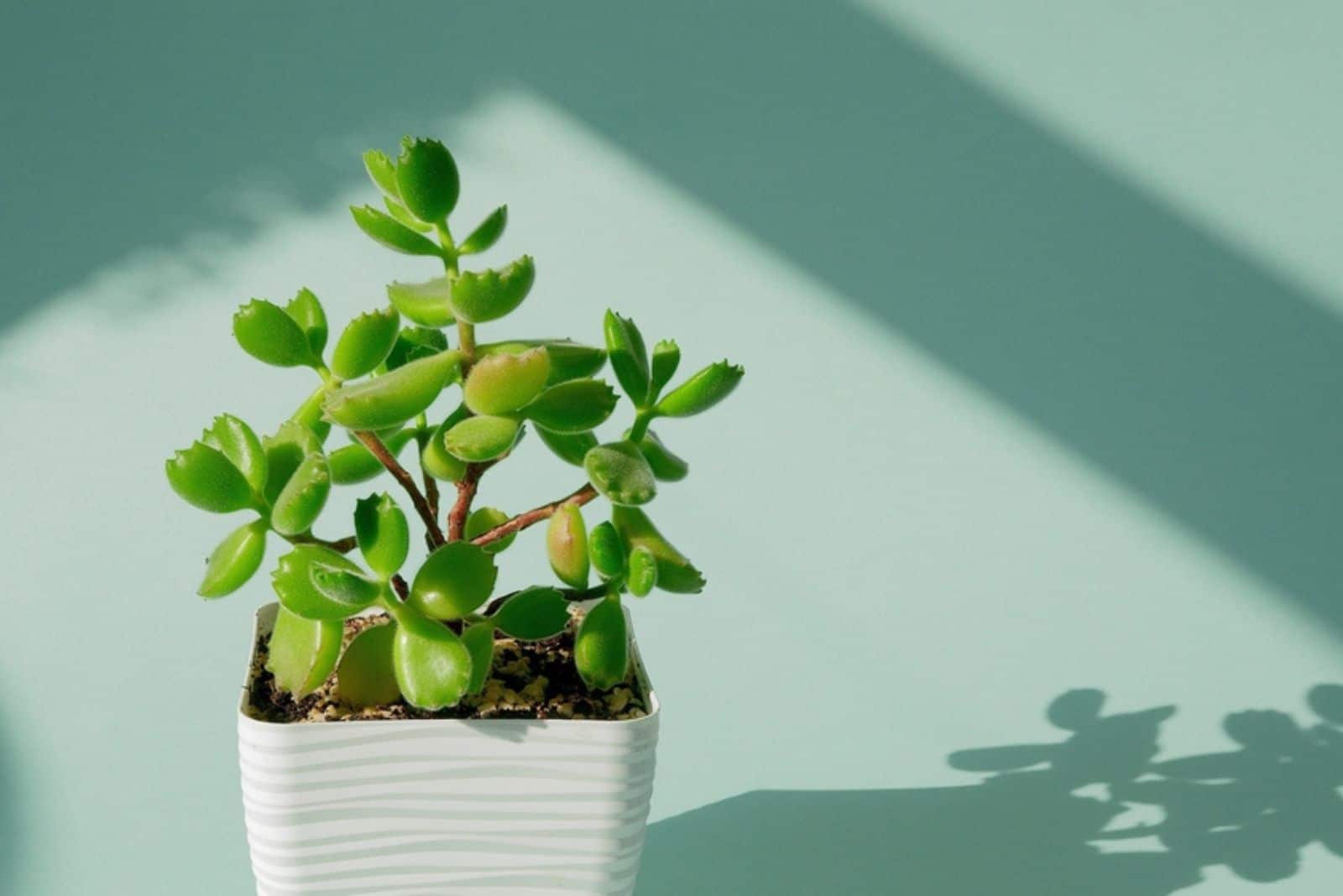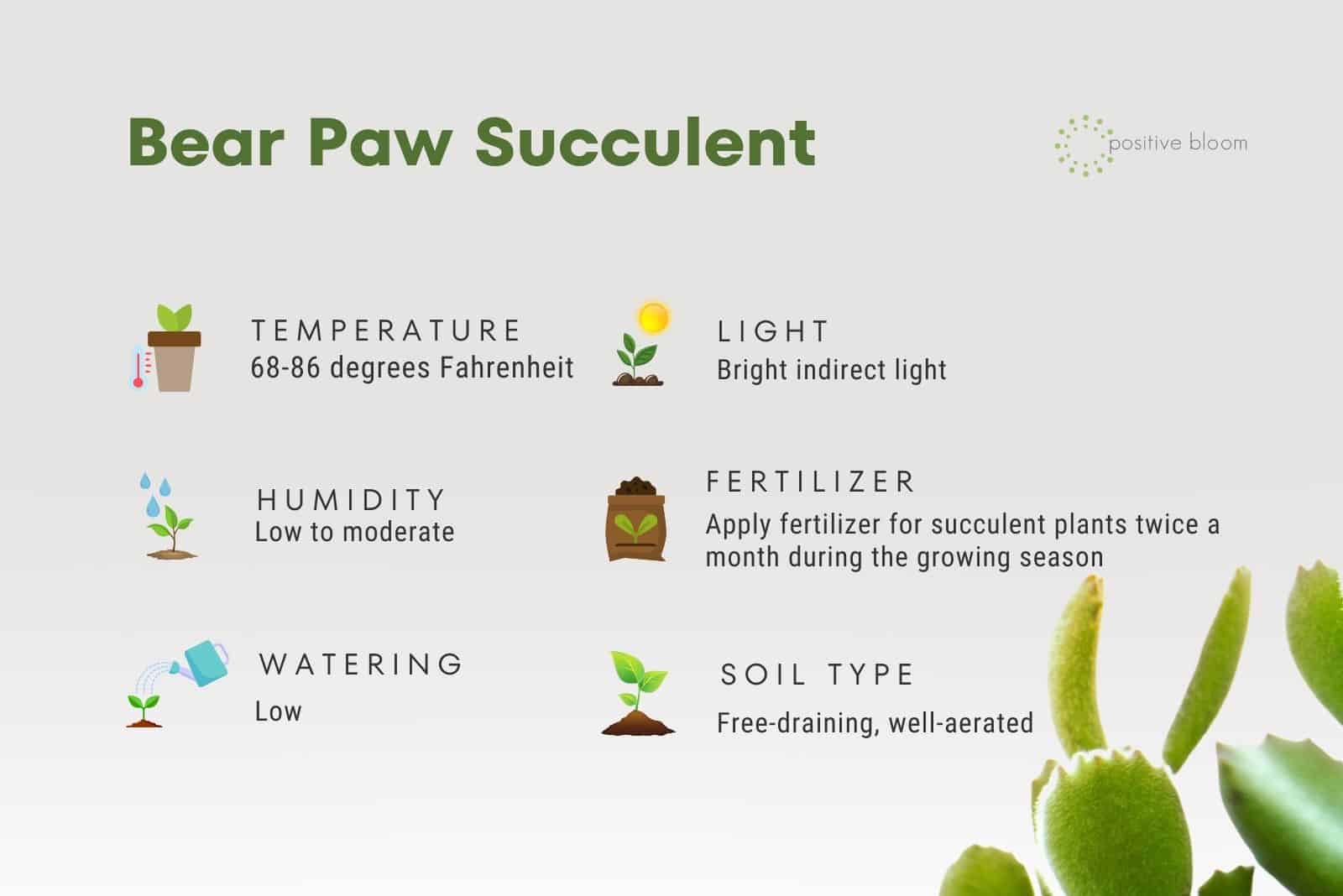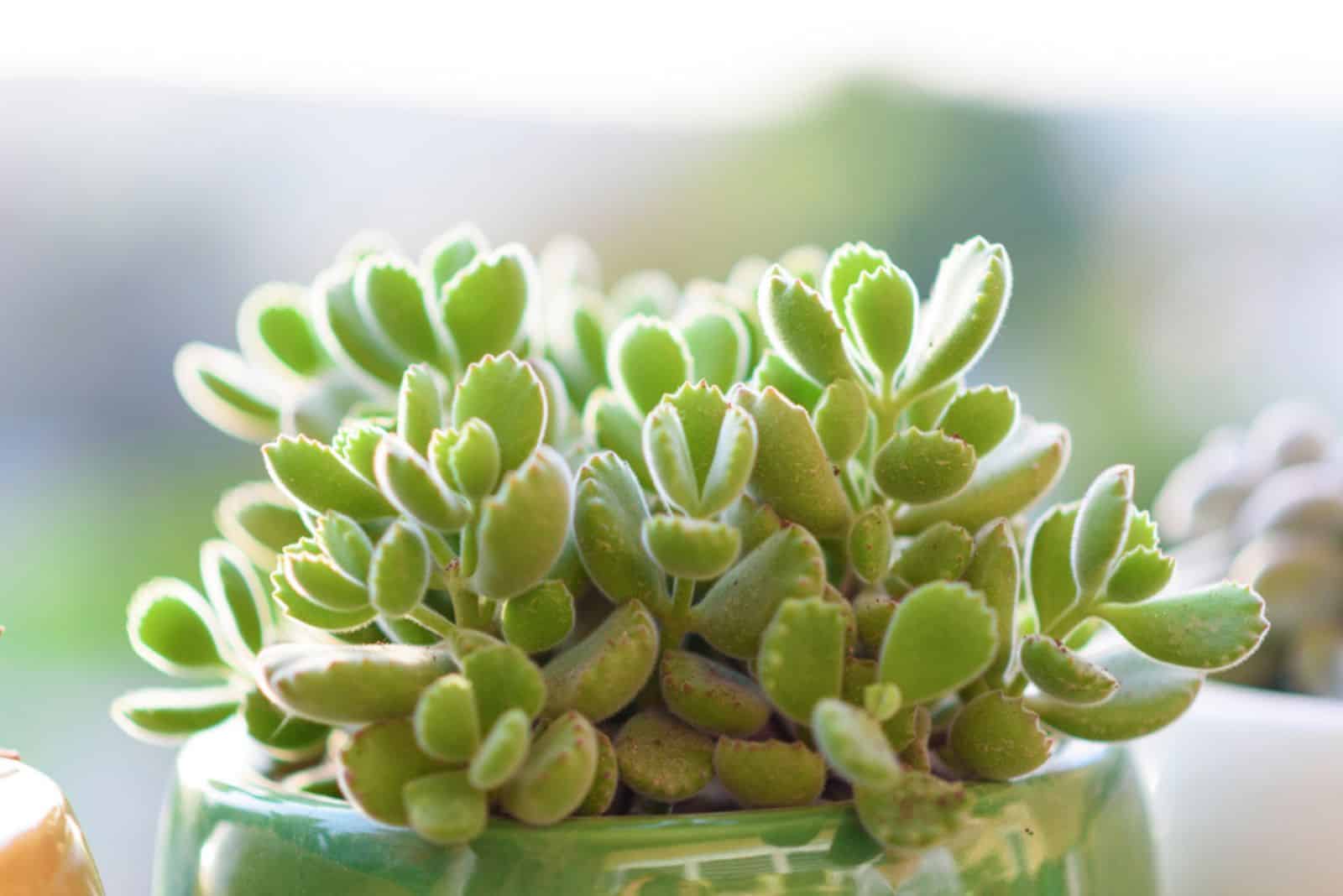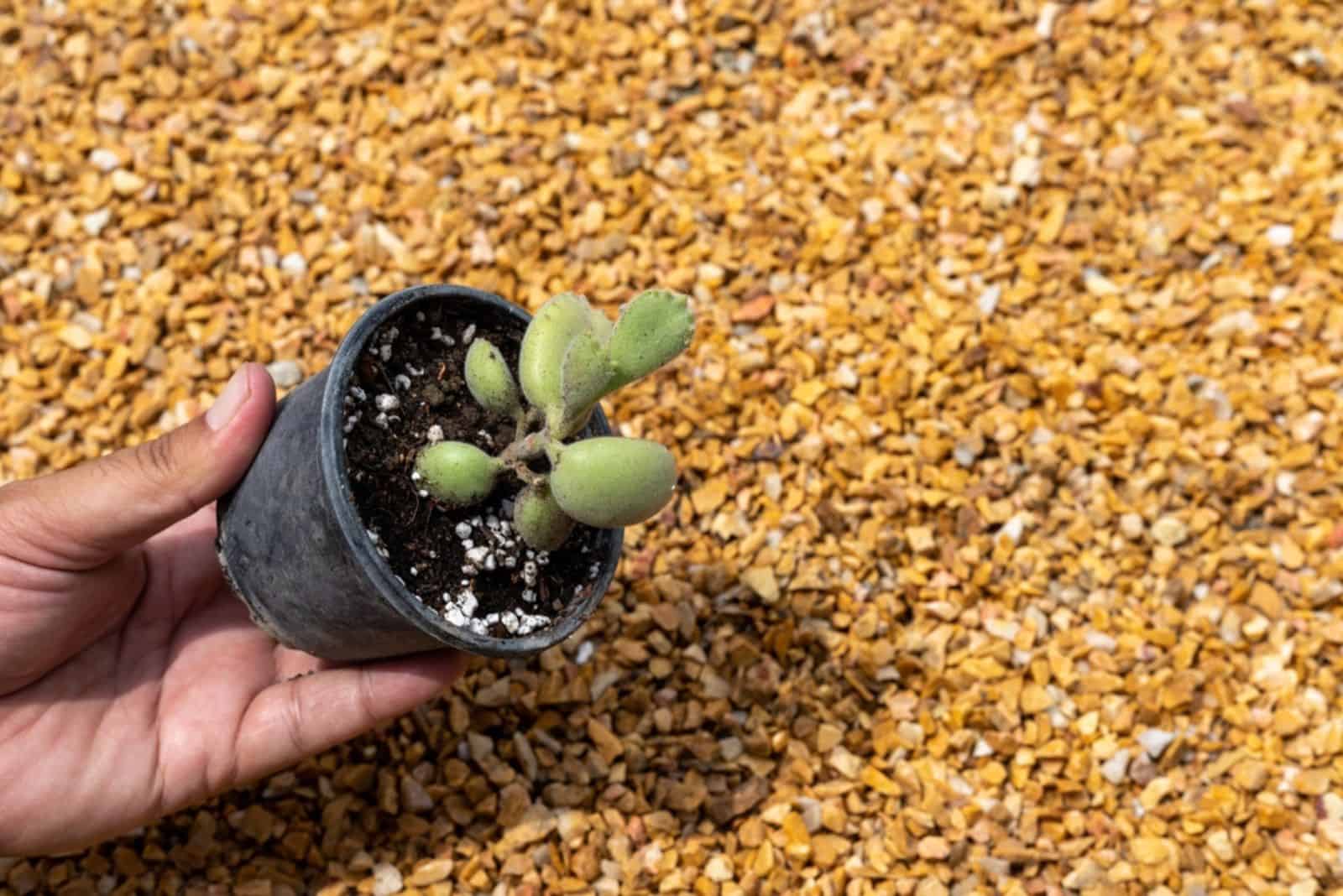What I especially like about plant nicknames is when there are animals in them! I instantly think about the way the plant is similar to some animal and why it got such a name.
Today, I’m gonna tell you more about one of the cutest succulent plants ever; the Bear paw succulent – a species from the Cotyledon genus.
My Bear paw plant is almost mature and, luckily, completely healthy. So, I’ll give you some care tips on how to provide the perfect environment for your Bear paw to grow healthily and happily.
I’ll also show you how to get more of these adorable plants by propagation, as well as some common problems that may occur and how to solve them.
Let’s start with some basic info!
[table id=646 /]
What Is The Bear Paw Succulent?
This eye-catching succulent is primarily grown as an ornamental plant. The leaves of the Bear paw are very fleshy and have tips that resemble bear paws, hence the name.
What I really like about this species is that you can quickly stress it to encourage the tips to turn deep green. Other succulents need to be way more stressed to develop a red hue.
The Bear paw is a species covered in tiny hairs, and in my experience, these plants are easier to maintain than hair-free specimens.
What makes this Cotyledon even prettier are the lovely, bell-shaped, orange blossoms in spring.
The Cotyledon tomentosa is on my top 10 list of succulent plants I recommend to novice growers.
After you learn its requirements, you’ll know exactly what I’m talking about.
Let’s take a closer
How To Care For The Bear Paw Succulent
Caring for the tomentosa species isn’t a big deal; you just need to give them enough light and water according to their needs.
Of course, you shouldn’t forget about other factors such as temperature, humidity, and soil if you want your Bear paw to be a completely healthy plant.
Light Conditions
Bear paw plants flourish in bright light, but you need to make sure it’s indirect. A little bit of direct sun won’t kill your Bear paw instantly, and may even help you stress the plant a little bit.
The problem arises when we expose the tomentosa plant to direct sunlight and leave it there all the time.
This will most likely result in leaf discoloration, and the Bear paw plant leaves could also get deformed.
I keep my Bear paw near a south-facing window, but I put sheer curtains over it to filter the light.
Since the plant needs a lot of light to grow healthily, spots with low light aren’t an option. Succulents become etiolated if grown in low light, and the Bear paw isn’t an exception.
How To Water The Bear Paw Succulent
Just like its cousins from the Cotyledon genus, the Bear paw isn’t a heavy drinker. I frequently advise my plant-loving friends that it’s better to wait a day or two longer than to overwater a Bear paw.
The chances of underwatering killing your Cotyledon are very low, which isn’t the case with overwatering.
Many growers think that because succulents are hardy plants, they will survive anything.
NOPE!
The roots are very sensitive no matter the species, so it’s best to let Bear paw soil dry out completely before irrigating it. Remember, overwatering is the number 1 cause of a dying succulent plant.
The Ideal Temperature And Humidity
Since tomentosa Cotyledons are native to warm regions, you might expect that they like high temperatures. However, that’s only partially true since temperatures over 86 degrees Fahrenheit can quickly damage this plant.
The same goes for temperatures below 68 degrees Fahrenheit. Well, slightly lower won’t damage your Bear paw much, but as soon as the temperature is lower than 50 degrees, you risk freezing and killing your Cotyledon.
The recommended temperature range for the tomentosa Cotyledon is from 68 to 86 degrees Fahrenheit.
Unlike other common houseplants, the Bear paw doesn’t demand high humidity. Keep humidity at about 40% and I’m sure you won’t have any issues with your tomentosa.
Soil And Fertilizer
It’s pretty easy to choose a suitable soil type for Bear paw plants. Again, this is a succulent and, just like its relatives, it thrives in loose, free-draining growing media.
If you’re a novice, store-bought succulent mix is a perfect choice for the Bear paw.
You can amend standard potting soil with perlite, pumice, and coarse sand to make a homemade soil mix for tomentosa (homemade sounds perfect, don’t you agree?!).
When it comes to feeding, the Bear paw will benefit from fertilizing after each watering. This may sound like too often, but remember that the soil needs to dry out first, so you typically only need to irrigate twice a month during the growing season.
How And When To Repot A Cotyledon Tomentosa
There’s one golden rule when it comes to repotting the Bear paw succulent, and that’s don’t repot often! I repot my tomentosa every 3 years, and I always wait until I notice the roots poking out of the potholes.
To repot this plant, gently remove your Bear paw from its container, inspect the root system to see if any roots have changed color or structure and, If so, cut them off with sterile pruners.
Fill a new pot with a growing substrate for succulents, and put your Bear paw in the middle. Pack it well, water it a little bit, and put the pot in bright indirect sunlight.
How To Propagate A Cotyledon Tomentosa
One of the first questions I got about this plant was, “How do you propagate a Bear paw succulent?”. Honestly, it didn’t surprise me at all; I mean, the plant looks adorable and grows well in a wide range of conditions, so it’s no wonder growers want more of them.
All you need to do is take a 5-inch long stem cutting from a healthy Bear paw plant. Remove the lower leaves, and then leave it to form a callus (it takes a few days). Plant the Bear paw leaf cutting in a succulent soil mix and keep the soil moist.
Here’s a video that will help:
Common Issues With The Bear Paw Succulent Plant
The two most common issues with the tomentosa Cotyledon are pests and root rot disease.
Let’s discuss these things a little bit further.
Pests
Yummy, yummy! That’s the first thought of aphids, spider mites, and mealybugs when they see the Cotyledon tomentosa plant!
The best way to avoid pests is by regularly checking on your tomentosa plant. Pay close attention to the stem and leaf base, as these critters prefer these plant parts.
If you notice any of these pests, simply dip a q-tip in rubbing alcohol or insecticidal soap solution and rub the parts infested by pests.
Root Rot
Root rot is really something to be scared of, especially when it comes to the Bear paw succulent. These plants tolerate drought well, which means too much water will do more harm than good.
Yellowing is the first sign of root rot in tomentosa plants.
To inspect the Bear paw plant for root rot, touch the leaves; if they’re soft and mushy, it’s time to inspect the soil. Insert a finger and if the soil is wet and mushy, smell it (yes, you read that right!). If it smells really bad, your Bear paw needs to come out of the container.
Mushy and discolored roots confirm your Bear paw has root rot. You need to get rid of every single diseased root and apply fungicide to the other roots to prevent fungus from spreading.
Repot your tomentosa in fresh soil mix and give it enough light to help it adjust to the environment.
Be careful with watering, and remember less is more in this case!
Wrapping Up
I think you know by now that the Bear paw succulent makes a perfect houseplant. Not only because of its appearance, but also its low care requirements.
You’ve seen the ideal environment for this succulent plant; so just follow our instructions, and your Bear paw will grow perfectly!
Until next time!







